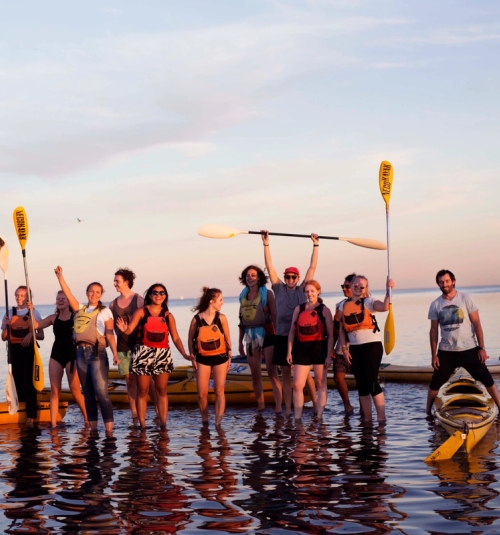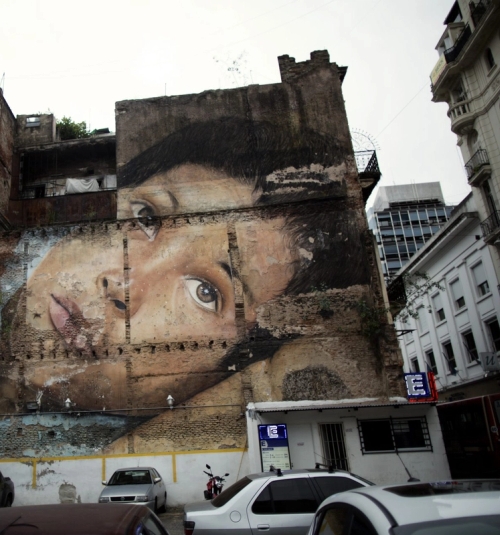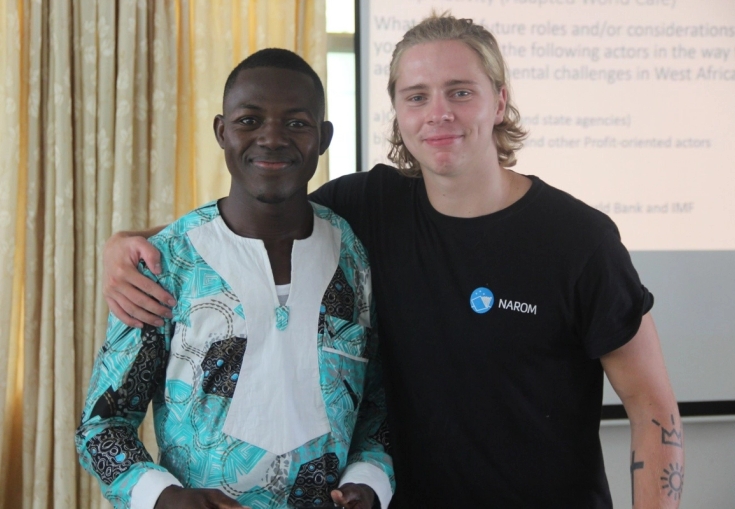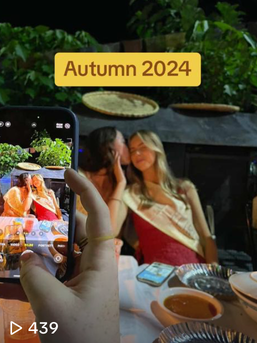
Best Sunday tango in town
We might say that … in heaven there awaits us…
the Platonic idea of the tango, its universal form.
– Jorge Luis Borges

For more than 20 years, street tango dancers have gathered at the very heart of San Telmo, at the Plaza Dorrego. In fact, the Sunday “Milonga of the Indian” at the square was started of the dancer Pedro Banavente, a man known as “El Indio”.
Surrounded by buildings from 18th century, it is one of the oldest public spaces in town. While the place turn into a mighty antique marked daytime Sundays, at night, between nine-ten and midnight, the tango dancers come out.
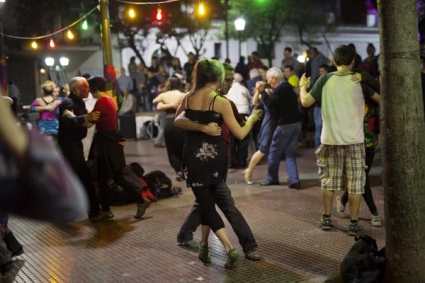
The dance is said to be the most iconic dance of the twentieth century with its intimacy, elegance, mythic origins and pride.
Between the tandas, a group of tracks in the same style played by the same orchestra, the dancers find their small white cotton cloths to accompany the Chacarera, a beautiful northern Argentine folk dance.
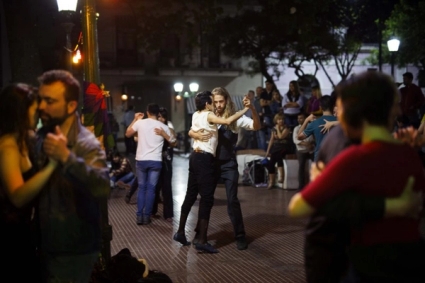
A bit of tango history
In the book “The Meaning of Tango: The Story of the Argentinian Dance”, author Christine Denniston writes that tango devolved as “the hunger of the soul for contact with another soul” in a poverty-stricken Buenos Aires. In the middle of the nineteenth century there was a huge demand for workers in the extremely rich, but remote country.
Argentina's massive agricultural and mineral resources were in process of being made accessible with the construction of an enormous railway. To attract immigrants from Europe, the Argentinian government offered subsidies, land, work and free food and accommodation on arrival. On the shores of the Río de la Plata immigrants set their feet.
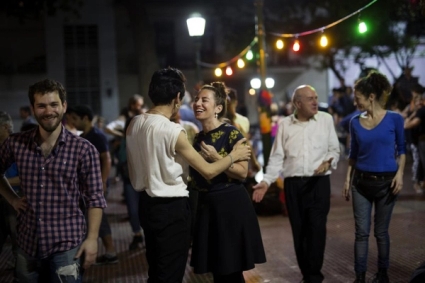
They came from Spain and Italy, from Britain, Germany, Libanon, Syria and Russia. The men were looking for jobs, but life was hard and immigrant hotels crowded. Homesick and with empty tummies the immigrants escaped into the world of dancing, according to the book “A Pickpocket´s History of Argentine Tango” by Victor Levant.
There where far more men than women dancing, and to get a women in his arms the man had to be skilled. To learn to dance there were men-only classes called práctica where they learned to dance the woman’s part with their male-teacher. The tango developed in brothels with prostitutes and the so-called “compradrito”, the man acting as a pimp or lover.

Nevertheless “Tango started black” but “Tango today is a sea of white faces”, Robert Farris Thompson writes in ´Tango: The Art History of Love”. The influence of the Afro-Argentine have been unknown as the blacks of Buenos Aires “disappeared” getting killed.
The inhabitants of Africans descent in Buenos Aires went from 34 percent in 1810 till less than 2 percent in 1887. Above all, the street dance is made up of a mix of music and dance brought by European, African and gauchos (or Andalusian).
At the beginning of the 20th century, tango music was played in restaurants and cafés throughout Buenos Aires.
Furthermore, the Golden Age of Tango took place in the 1940s and 1950s. Formal dance halls called milongas – the tango venues – where placed all over the city.
During the Argentine military government from 1976 to 1983, tango and even tango movies were banned. Surprisingly, it was also in this decade tango shows took off overseas and millions got exposed to the tangueros from Buenos Aires. In the 1990s, the tango went to Hollywood with various films made featuring stars like Rudolph Valentino, Madonna and Marlon Brando.
Tango texts are the authentic poetry of Buenos Aires. They create moods of humor, valor, and longing, only the last of which overlaps a stereotype of tango as a song of anguish.
Above all, tango poets make us aware of the passing of time. They live this awareness, which may well turn out to be, au fond, the very essence of human consciousness – Robert Farris Thompson in ´Tango: The Art History of Love”
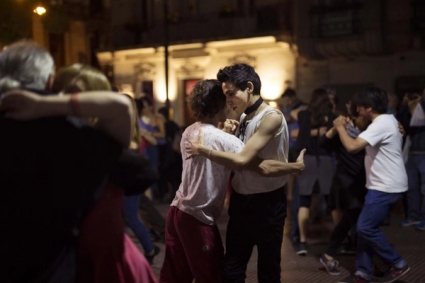
Important rules of tango
Going to a milonga, it is considered rude to go up to a person an ask for a dance. This both put the person asking for a dance at risk of loosing face and puts pressure on the person asked to say yes.
Therefore, the way to get dancy is to catch the others person´s eye across the room and get confirming eye-contact back. This is called cabezeo, a word also used for football players when hitting the ball with their head.
As described in a tango article in The New York Times, the “followers” are the females, and they are not allowed to move until the “leaders”, males, indicate it. The typical tango orchestra is made up of six musicians and is called Orquesta Típica.

There are two bandoneons, two violins, a piano and a double bass.
To start of, learning the ´Eight Step Basic´called Salida would be a first, these steps also shown by Madonna in the movie Evita.
In the milongas the music is organized into tandas, a group of tracks in the same style played by the same orchestra. The dancers normally stay with the same partner until the tanda ends after ten to fifteen minutes and the floor get cleared.
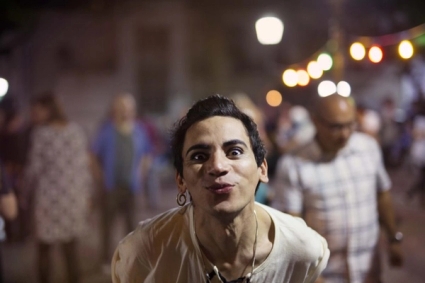
An important person to know is Carlos Gardel, a hero of Argentina and the inventor of the tango song.
I hear the echo of those tangos
of Arolas and Greco
danced upon the sidewalk,
an instant distilled that remains
without before, of hereafter, an anti-oblivion,
having the taste of everything lost,
and everything regained.
– Jorge Luis Borges, “El tango” in “El otro, elmismo” (1969)

